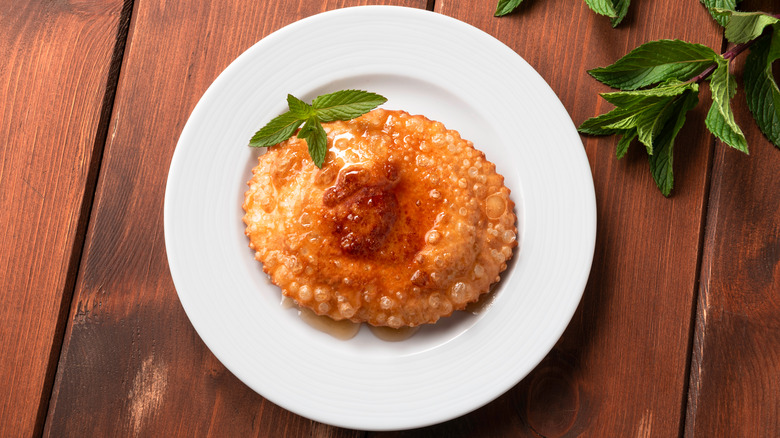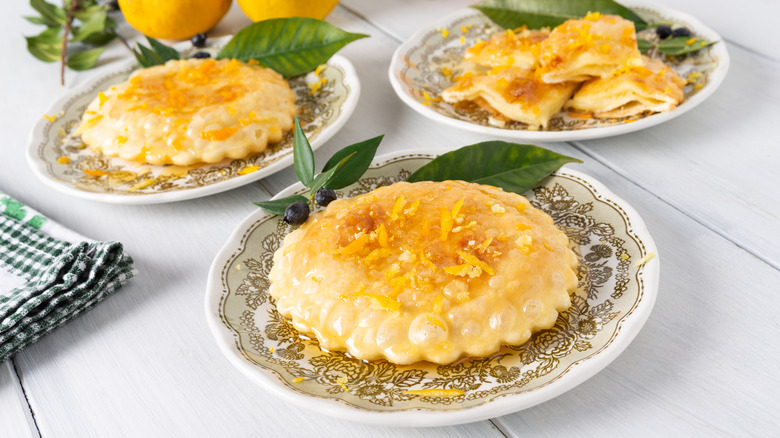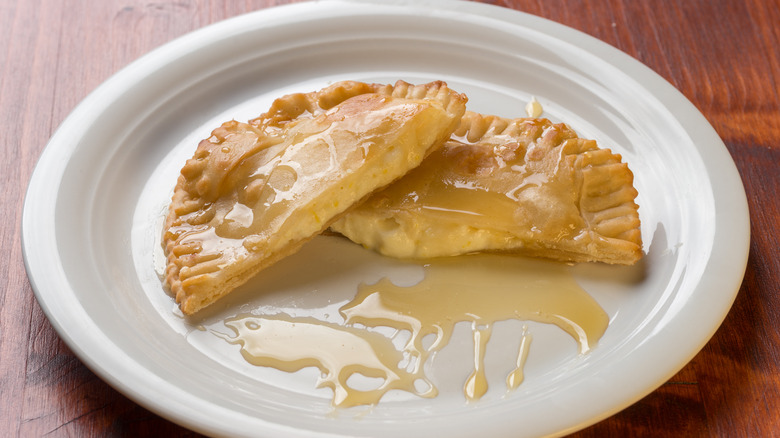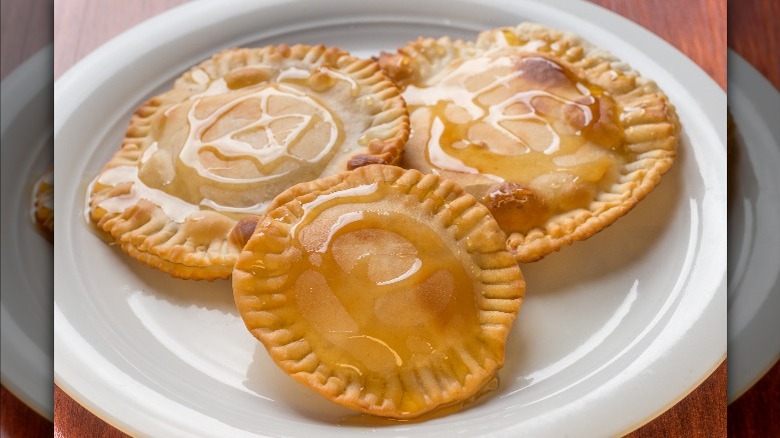Seadas Is The Honey-Topped Cheese Dessert You Need To Know About
When Sardinian shepherds returned home from long days spent out in the Italian countryside, plates of warm seadas were often waiting. This delicious recipe is famous throughout the island of Sardinia, and while the pastry is often presented as an after-dinner treat, the warm cheesy tarts have historically been placed onto tables as second-course dishes, not simply desserts. Whether served after or during a meal, these fried, honey-topped treats deliver gooey, earthy goodness that will hit the sweet spot, whether or not you've spent the day herding farm animals.
Seadas may look like the pastry version of toasted ravioli (which were supposedly invented due to a tipsy mishap), but this rustic recipe offers a sweet and savory mouthful to diners — not just a savory one. Like a lot of ravioli, though, this tart is best enjoyed while still hot. You don't necessarily need to travel to Italy to taste the captivating recipe, but borrowing a few tips from Italian chefs can help you put together homemade seadas that are true to the original cheese-and-honey-coated form.
Traditional seadas ingredients
Only a handful of ingredients are required to put together these cheesy delights, but the quality of the cheese and the kind of honey used to form this pastry help the recipe make a good impression. Employing softer cheese made from sheep's milk — like that commonly found on Sardinia — and wrapping the filling in lard-enhanced semolina crust creates a combination of ingredients that sings when deep-friend and plated. Pecorino cheese in particular and lemon zest are commonly used to make the cheesy filling, and the flaky, buttery crust is also prepared with eggs to form the tart's exterior.
Corbezzolo honey, a rare and bittersweet variety native to the Italian region, is a local ingredient used to finish the dish, and this nutrient-packed sweetener delivers earthy-tasting notes of licorice, pine tree sap, leather, and rich, smoky coffee. Chesnut honey is also commonly used to drizzle on top of the finished treat, but its edgy, punchy taste is admittedly not for everyone.
How to make seadas
To create your own cheese and honey pastries without needing to travel to Sardinia, gather your intended ingredients, then prepare to make the recipe right before serving. When purchasing items at the market, look for a mild pecorino or dolce sardo cheese to form the base of the pastry's filling. You'll also need a lemon to grate and add to the cheese, plus plenty of sunflower oil for frying the assembled tarts. There are many variations on this basic recipe, though, so experiment with pairing flavors that satisfy the eaters in your household.
After making the dough, let it rest while you focus on mixing bits of chopped cheese with the lemon rind. Similar to other fruit-filled pastries, the dough will be rolled out and cut so that enough filling can be sandwiched between two discs and the edges can be sealed with a fork. Fry each piece until golden brown, then top the hot pastries with the honey of your choice.
Enjoying seadas
Should you find yourself looking for seadas in Sardinia, you may hear these treats also called "sebadas" by some locals. The variations go beyond just names, though. In some of the recipes found throughout the island, chefs will use ricotta to fill these tasty desserts, and orange zest can be used to replace the lemon in the tart's center filling. Additionally, instead of honey, powdered sugar sometimes finishes the freshly made dessert.
More globally, the fried dumplings may be enhanced with the inclusion of soaked and drained sultanas. Plates can also be garnished with fresh mint leaves, citrus slices, berries, or herbs, depending on the season and location of the presented dish. For a more savory serving — or to enjoy seadas as a second course — make the cheese mixture with parsley and salt or consider baking the assembled tarts for a lighter alternative to frying. However you decide to create these cheesy treats, be sure to serve and eat while freshly made and hot.



